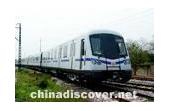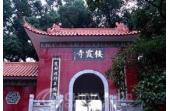Nanjing
- Things to do
-
- Photo(153)
- Tips&article(339)
- Make it Happen
- Map
-
loading...
Top 5 Lists
-
2.
Stone Hill
-
5.
Ming Tomb
Nanjing is the capital of Jiangsu Province, and in the past it was the capital of several empires and of the Republic of China. Nanjing means “Southern Capital.” It has alternated with Beijing as the capital of big empires and of modern governments. Beijing means Northern Capital. In the past, it was a prominent city, and its rulers benefited from the partial control of trade on the big and long Yangtze River that allowed trade vessels to travel from Sichuan in the west of China to Shanghai and the Pacific Ocean. During the Ming Empire, it was the largest city in China. Now it is a city of about 8 million people, and it isn’t considered one of the bigger cities in China. The remains of the empires of the past can be toured all over the city, and the nearby Purple Mountain (Zijinshan) area has many historical, cultural, and religious sites to visit. You can also go there for walks or to exercise in the parks and natural areas. Nanjing is an important destination in a tour of China. The highlights include Purple Mountain, the Mausoleum of Sun Yat-Sen, Confucius Temple, Mingxiaoling Mausoleum, Qinhuai River, the Memorial Hall to the Victims in the Nanjing Massacre, Linggu Temple, the Presidential Palace and Mochou Lake.
The government has built museums and memorials to Sun Yat-Sen and his revolution and the Chinese who died during the Japanese occupation. There is also a memorial for the thousands of American airmen who died defending China. Many ancient historical sites in the city and on Purple Mountain including Ming Xiaoling Mausoleum are preserved and developed for visitors.
One very good distinction of the city is that it is reported to have about the lowest crime rate in China. Another distinction is that it has the biggest inland port in China that can handle big ocean-going ships. What is called the biggest train station in Asia is being built in the southern part of the city at the Nanjing South Train Station, and one of the world’s fastest trains is being built to connect it with Beijing.
Location: On the Yangtze River near the western border of Jiangsu Province. It is about 300 kilometers (200 miles) from the sea and Shanghai. It is on the southern side of the Yangtze that protected the city from enemies in the north. In the area of Nanjing, the Yangtze River flows from the southwest to the northeast.
Features:
- Purple Mountain that has Sun Yat-Sen’s Mausoleum Mingxiaoling Mausoleum, Linggu Temple, other historical sites and temples and natural places.
- Qinhuai River
- The Memorial Hall to the Victims in the Nanjing Massacre
- Confucius Temple
- Mochou Lake
- The Yangtze River Bridge that was built in 1968 is the longest in China (6,705 meters).
- Yangtze River Cruises
Touring Activities:
- Learn about the history of China.
- See the sites.
- Go on a Yangtze River cruise ship or tour the area by boat.
- Enjoy the Purple Mountain and Qixia Mountain scenic areas.
Traveling Information:
Best Time to Visit: During the months of May and September, October and November when it is warm but there isn’t the heaviest monsoon rain.
Transportation: Nanjing is served by bullet trains, and they are convenient and economical compared to flying from or to Shanghai, Wuxi, Suzhou and Hangzhou. Many more routes are under construction, and they are planned to begin operation in the next four years.
History
The area has had the capital city of several governments in China. The Wu Kingdom first made it a capital city of an empire in 229 AD. Then it was the capital of the Jin Dynasty until the Sui Dynasty destroyed it. During the Tang Dynasty, it was rebuilt, and it was the capital of the Southern Tang Dynasty from 937-975.
The Ming Dynasty overthrew the Yuan (Mongolian) Dynasty, and it was the capital of the Ming Dynasty from 1368 to 1421. It was the capital of the Southern Ming Dynasty for a year from 1644 to 1645. Then it was captured by the Qing Dynasty. The Qing Dynasty lasted for about two hundred and seventy years after this.
There was a revolution against the Qing by the Taiping in the middle of the 1800s, and the city was the capital of the Taiping until 1864 when the Qing Dynasty recaptured it. There was a revolution against the Qing early in the 20th century, and in 1912, Sun Yat-Sen became temporary president of the Republic of China with his capital in Nanjing.
Nanjing became the capital of the Republic of China again in 1927, and it remained the capital until the Japanese occupation in 1937. It was again the Republic of China capital from 1945 until 1949 when the Communist government captured the city.
Tips & articles
|
|
|
forum discussion
|
|
|












